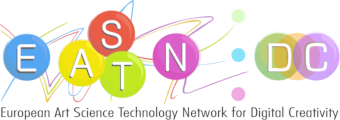Viewing art is an active, influential, and emotion-strengthening process. Simultaneously, emotion detection and other interrelated variables have become increasingly important for research in recent years. In a social media setting, it is really interesting to explore the effect of art memorabilia on human emotions. While much has been written about art experience, but it has not yet been thoroughly discussed through the prism of popularity.
The objective of the study is to investigate the aesthetic experience of artworks and art memorabilia in the sense of art popularity. With this in mind, art experience as a psychological occurrence could elicit a wide range of emotions over time. The hypothesis is related to the specific context of original artworks and art memorabilia, which can inspire individuals to share their aesthetic experiences online. The visibility of artists and their artworks shared by viewers on social media like Instagram tends to raise the artworks or artists' popularity. The question of whether the art or the artists could be popular has been preoccupying with the experts for some time. We can characterize these thoughts as being rooted in a recent study of 90 artists of the twentieth century. Researchers discovered that the most significant factor in an artist's success and fame was their social network. They have focused on distinguishing popularity (as assessed by artist references in twentieth-century literature) from other variables including personality traits, social status, and reputation. It was found that artists who had a more heterogeneous social network (personal and professional connections from various fields) were statistically more likely to gain success, than others who had more homogeneous. We build on this analysis to identify the state-of-the-art trends and strategies about the art presence on social media networks. We also attempt to recognize the key emotions and aesthetic preferences of viewers through their posts. We focus on artworks images and art memorabilia such as posters, coffee mugs, bags, phone cases, and other home decoration items. The current contribution examines this research topic by analyzing recent Instagram posts about Frida Kahlo and Vincent Van Gogh, with an emphasis on how real artworks or art memorabilia influence their artworks popularity. Consequently, two questions arise: a) Are memorabilia a part of the aesthetic experience? b) Is this considered as real artwork popularity or over-popularity?
In light of the current context, we attempt to associate the above variables to the popularity of two artists and artwork memorabilia using Instagram data. A closer look at the most important bibliographic material is needed to meet the research's objectives. We will use methodological tools for empirical research such as APIs and machine learning algorithms in this study. The remainder of the methodology is the following: 1) Literature review to assess the correlation between art experience and art popularity in various contexts. 2) Empirical research into fussy multivariate Instagram data (such as artwork photos, text, hashtags, comments) to determine user’s sentiments and popularity through their posts. The aim can be achieved by using the Instaloader API to scrape posts related to Frida Kahlo and Vincent van Gogh, the NLTK and Textblob Python Library for natural language processing and emotion analysis, and classification or regression machine learning algorithms.
The foregoing outline aims to enhance the aesthetic experience as well as art popularity. To improve the aesthetic experience, it is important to emphasize the creation of interpretive designs for museums and galleries. A novel approach from this perspective is the development of a data-driven media art installation as an analytical tool equally for experience assessment using real Instagram data. Obviously, artificial intelligence algorithms are intended to analyze human emotions. Given this proof, a data-driven media art installation (tool) could be blended with artificial intelligence algorithms in the future, to quantify and optimize the aesthetic experience in various settings.
Back
“Reflections: Bridges between Technology and Culture, Physical and Virtual”
is supported by:






